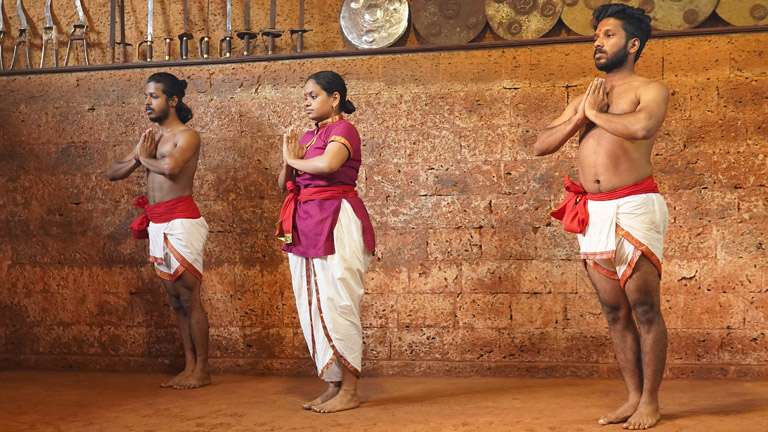



Marmashastra or the science of Marmas is part of Shalyatantra, one of the eight categories into which Ayurveda is divided. Ancient masters like Sushruta and Sage Agastya have written in detail about Marmashastra. This science has a very significant role to play in Kalaripayattu training and is taught alongside Verumkai prayogam or unarmed combat after the students have been sufficiently coached in Angathari or armed combat. It is after the student has been trained in fighting with all forms of weapons, that he/she is initiated into the moves and stances of unarmed combat. When Marmavidya or knowledge of the marmas is taught, the asan insists that it should be used only as of the last option for defeating the opponent.
Marmas in Human body
The marmas of the body are not visible on the outside. They lie deep within. There are 108 marmas in the human body, which have been divided into two categories. They are thodu marmas (96 in number) and padu marmas (12). There are 25 marmas above the neck, 45 between the neck and the navel, 9 between the navel and the moolaadhara [primary focal point of the subtle human body], 14 in each arm and 15 in each leg. This is according to the southern tradition of Kalaripayattu.
The northern tradition of Kalaripayattu puts the number of marmas at 107, of which 64 are described as abhyaasa marmas. All the marmas have been given distinct names, and the consequences of any damage to each of the marmas have been documented in great detail in several books written by the great masters.
It is not unusual for the students to sustain injuries during training, either caused by hands and legs or by weapons. What is important in such situations is timely and correct treatment. Hence, training in Marmachikitsa can be considered to be as important as training in all combat moves and stances. This includes techniques like Uzhichil, Pizhichil, Shirodhara, Kadivasti, Urovasti and so on.
All the available literature on Marmachikitsa are unanimous in stating one point. Only those students who are disciplined and have good control over their minds should be trained in the potentially dangerous forms of marma treatment. Besides this is the diktat that inflicting damage on the marmas of the opponent in order to defeat him/her should be considered only in a life-threatening situation. Therefore, even when students are trained in attacking the marmas, they are also taught how to neutralize the effects of the damage.
Department of Tourism, Government of Kerala, Park View, Thiruvananthapuram, Kerala, India - 695 033
Phone: +91 471 2321132, Fax: +91 471 2322279, E-mail: info@keralatourism.org.
All rights reserved © Kerala Tourism 2026. Copyright | Terms of Use | Cookie Policy | Contact Us. Developed & Maintained by Invis.